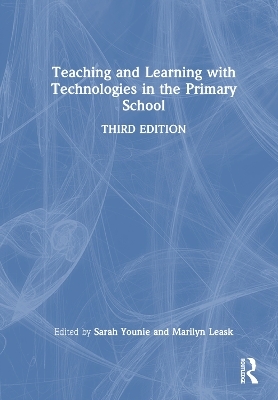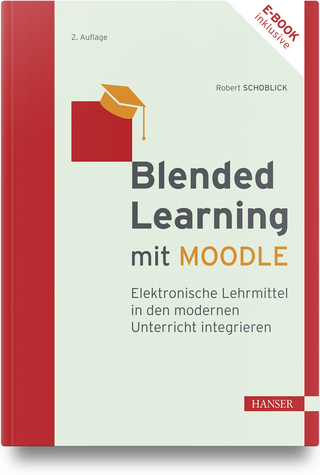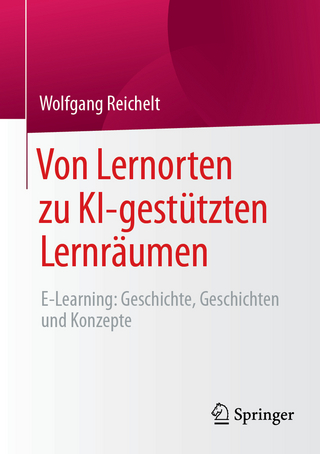
Teaching and Learning with Technologies in the Primary School
Routledge (Verlag)
978-1-032-52882-3 (ISBN)
Newly expanded to include 50% brand new chapters reflecting the abundant changes in the field since the last edition was published, it offers practical guidance underpinned by the latest research and teaching in the field. The authors draw on the extensive experience of educators in Australia, England, Ireland, Scotland, South Africa, the U.S.A. and Wales to provide local, national and international examples of the application of digital technologies to teaching and learning across the primary curriculum.
Illustrated throughout with case studies and examples together with a glossary explaining key terms, chapters focus on how technology-based practices can support the teaching of individual subjects, as well as a range of teaching and learning styles. Key and new topics covered include:
- Supporting reading and writing with technology
- Technology in the early years
- Developing e-skills of parents
- Use of Virtual Reality in learning
- PedTech
- Resilience in the digital world
Written for all training primary teachers, as well as more experienced teachers and technology co-ordinators looking for guidance on the latest innovative practice, Teaching and Learning with Technologies in the Primary School, 3rd edition, offers advice and ideas for creative, engaging and successful teaching and learning.
Sarah Younie is Professor in Education Innovation at De Montfort University, UK. Her primary research is in translational research in education, that is, the application of research in practice. Sarah is editor-in-chief of the Journal Technology, Pedagogy and Education. Marilyn Leask is Professor of Education at De Montfort University, UK, co-chair of the MESH Guides knowledge mobilisation initiative and has been a teacher, researcher, secondary school assistant head, local authority policy officer and university dean. She has had policy roles in two UK national agencies.
Foreword
Introduction
1 - LEARNING IN THE DIGITAL AGE: DEVELOPING CRITICAL, CREATIVE AND COLLABORATIVE SKILLS
2 - TEACHING AND LEARNING FOR RESILIENCE IN A DIGITAL WORLD
3 - PEDAGOGY AND TECHNOLOGY
4 - SPECIAL EDUCATIONAL NEEDS AND TECHNOLOGY
5 - DIGITAL TECHNOLOGIES AND ASSESSMENT
6 - DIGITAL DILEMMAS IN THE EARLY YEARS
7 - DIGITAL TECHNOLOGY AND ART
8 - TECHNOLOGY AND DIALOGUE IN THE PRIMARY CLASSROOM
9 - DIGITAL STORYTELLING
10 - USING SHORT FILM TO DEVELOP CHILDREN’S MOVING IMAGE LITERACY
11 - USING TECHNOLOGY CREATIVELY IN ENGLISH AND MATHEMATICS
12 - USING TECHNOLOGY IN PRIMARY SCIENCE
13 - USING MOBILE TECHNOLOGY TO RAISE STEM ATTAINMENT AND DEVELOP SCIENTIFIC THINKING
14 - MODERN FOREIGN LANGUAGE TEACHING USING DIGITAL TOOLS
15 - ENHANCING PRIMARY MUSIC WITH TECHNOLOGY
16 - TECHNOLOGY AND COMPUTATIONAL THINKING IN EARLY CHILDHOOD
17 - COMPUTER PROGRAMMING IN THE PRIMARY SCHOOL
18 - AUGMENTED REALITY (AR) - INNOVATIVE USES IN PRIMARY EDUCATION
19 - INTERACTIVE TECHNOLOGIES AND OUTDOOR LEARNING
20 - VIDEO CONFERENCING AND AUTHENTIC LEARNING IN THE PRIMARY SCHOOL CLASSROOM
21 - VISUAL LITERACY, LEARNING AND CONCEPT MAPPING IN PRIMARY AGE CHILDREN - NEURO-POSITIVE STRATEGIES FOR BRAIN-BASED LEARNING
22 - GLOBAL CITIZENSHIP: EDUCATION IN AN INTERCONNECTED GLOBAL SPACE
23 - SCHOOL POLICY AND ONLINE SAFETY
24 - FAMILY LEARNING IN THE CONTEXT OF COMPUTER SCIENCE EDUCATION
25 - CASE STUDY: SUSTAINABLE STRATEGIES FOR ICT/DIGITAL TECHNOLOGY USE IN SCHOOLS
26 - USING DIGITAL TECHNOLOGIES TO SUPPORT CONTINUING PROFESSIONAL DEVELOPMENT
APPENDIX 1: EMERGING TRENDS: ARTIFICIAL INTELLIGENCE AND EDUCATION
| Erscheinungsdatum | 21.04.2024 |
|---|---|
| Zusatzinfo | 27 Tables, black and white; 2 Line drawings, black and white; 60 Halftones, black and white; 62 Illustrations, black and white |
| Verlagsort | London |
| Sprache | englisch |
| Maße | 174 x 246 mm |
| Gewicht | 861 g |
| Themenwelt | Schulbuch / Wörterbuch ► Unterrichtsvorbereitung ► Unterrichts-Handreichungen |
| Sozialwissenschaften ► Pädagogik ► Schulpädagogik / Grundschule | |
| ISBN-10 | 1-032-52882-6 / 1032528826 |
| ISBN-13 | 978-1-032-52882-3 / 9781032528823 |
| Zustand | Neuware |
| Haben Sie eine Frage zum Produkt? |
aus dem Bereich


